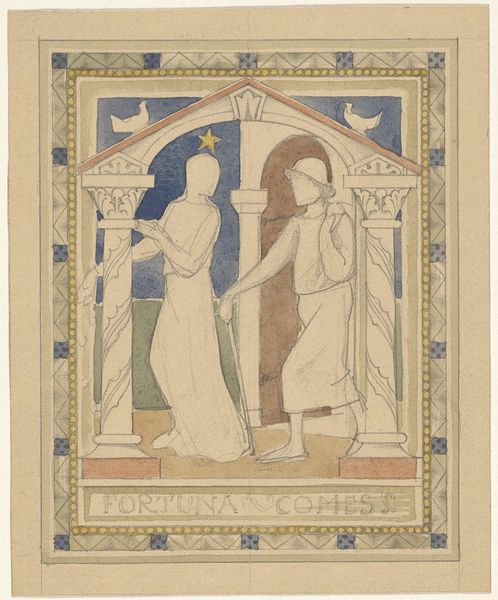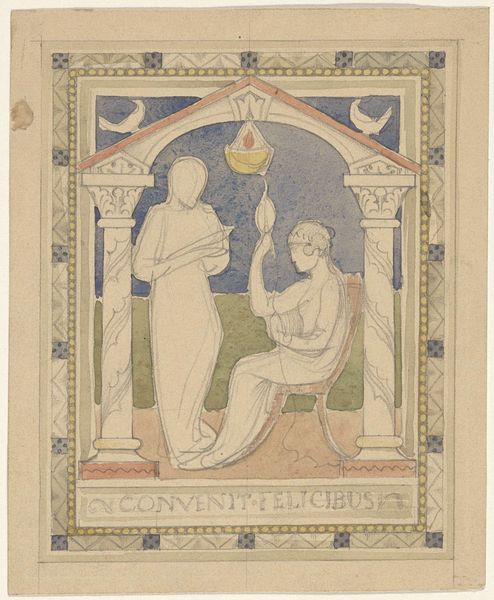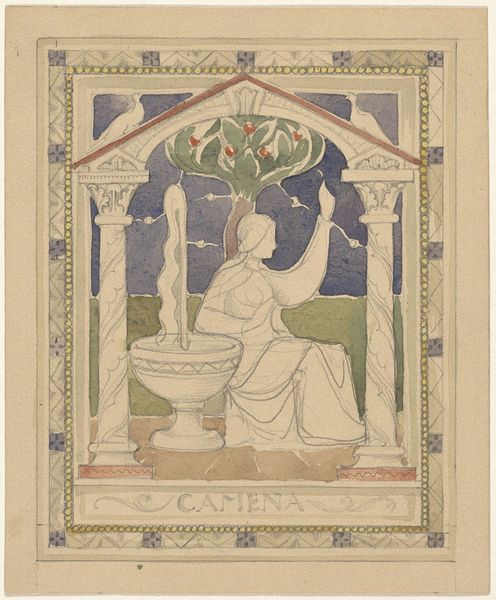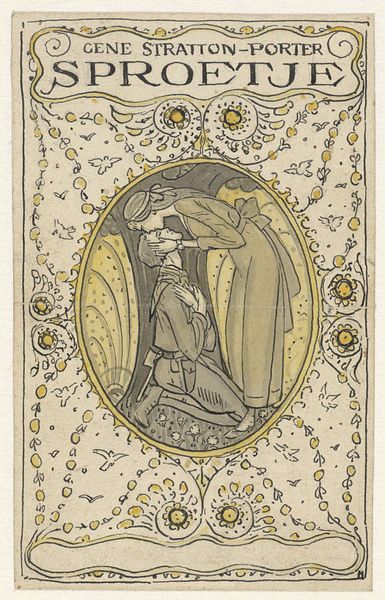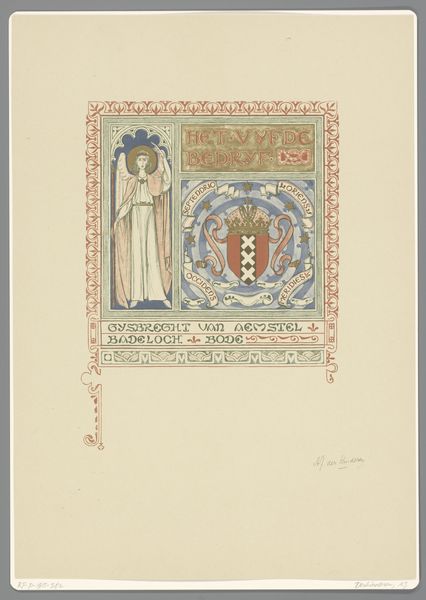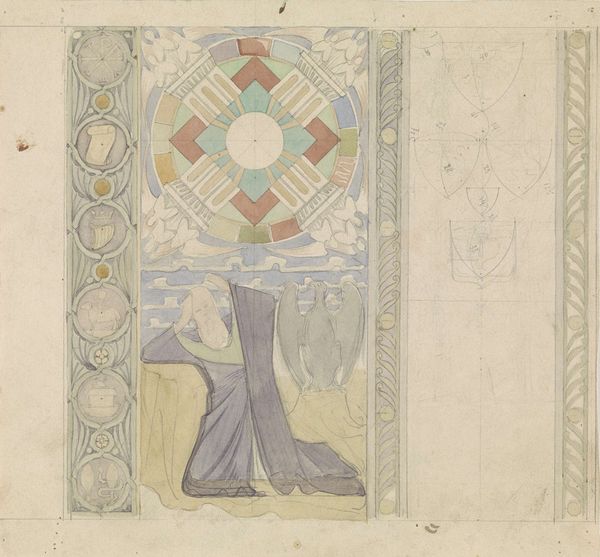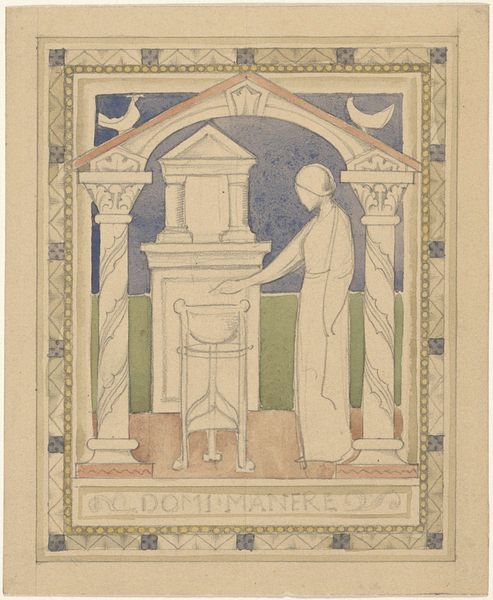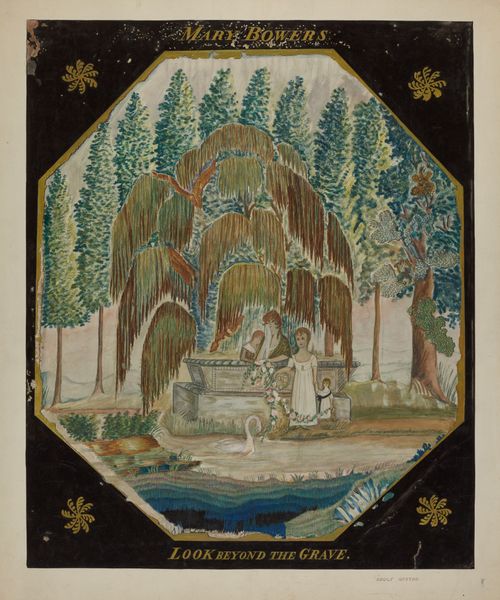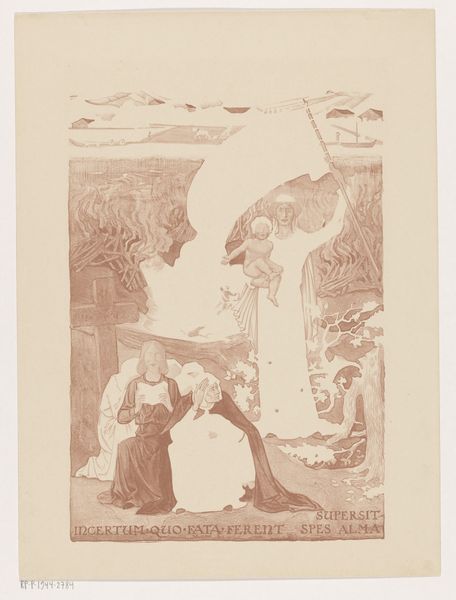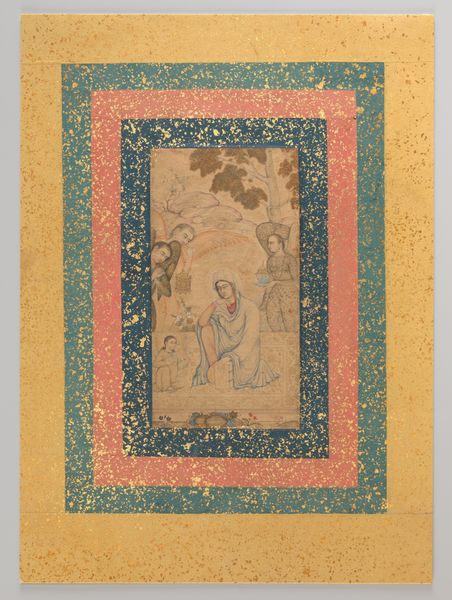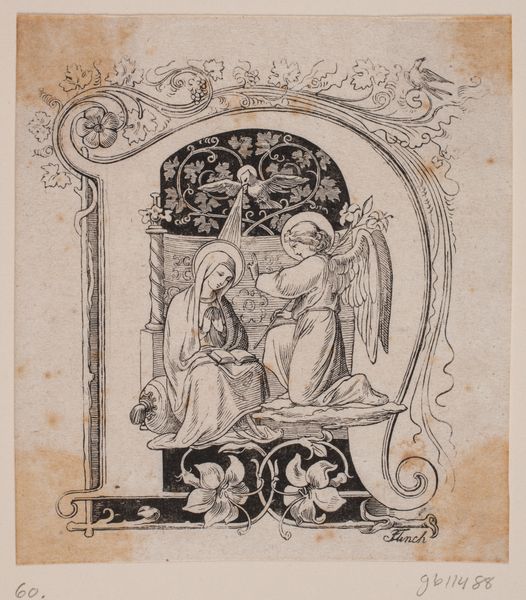
watercolor
#
landscape
#
figuration
#
watercolor
#
symbolism
#
watercolour illustration
Dimensions: height 152 mm, width 125 mm
Copyright: Rijks Museum: Open Domain
Curator: The subdued palette immediately lends a somber, almost spiritual air to the work. It's like looking at a faded memory. Editor: Indeed. What we're observing is "Ad Fontes" by Antoon Derkinderen, created between 1869 and 1925. It is a symbolic representation executed in watercolor. The title itself, "Ad Fontes," meaning "to the sources," hints at a return to fundamental principles. Curator: That rings true. There's a clear architectural frame that encompasses the figures. They're sheltered, almost reverential. I imagine Derkinderen felt society needed to seek knowledge, back to its origin, to escape the age's struggles. Editor: Note how the figures are positioned under what looks like a stylized tree of knowledge, replete with fruit. Also consider the execution: a meticulous, time-intensive craft. In making this art available, what materials are required, what is its location? Curator: Yes, I perceive an invocation to classical ideas within its symbolist visual language, recalling medieval illuminated manuscripts—the use of architecture, color, and the formal positioning of the figures. Editor: It's not just a formal invocation. Look at the materiality. Watercolour isn't always valued the way oils are. This medium can convey lightness, but there’s labor involved in such precision. Also notice how the piece is created for circulation—on paper. Who has access, how is knowledge transmitted by this format? Curator: Fair point. There’s a tension—between elitism and access. The cultural elite often circulated symbolist works in private art journals or special exhibitions. Still, a watercolor like this might become a print, reaching wider audiences through book illustrations. Its message might seep into popular consciousness that way. Editor: Precisely, art is not some transcendental encounter or self expression but can shape perceptions through accessible techniques. Curator: Ultimately, Derkinderen presents a narrative ripe with interpretations, asking the viewer to seek truth, knowledge, from the very origins of things. It is less about easy answers, and more about the questions one must ask themselves. Editor: So true. It speaks volumes about not just finding but disseminating information to challenge conventions—through both image and accessibility of its medium.
Comments
No comments
Be the first to comment and join the conversation on the ultimate creative platform.
